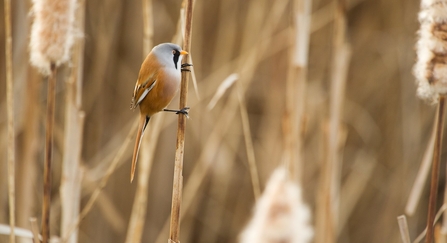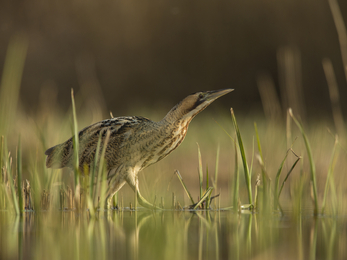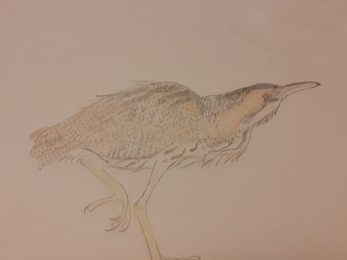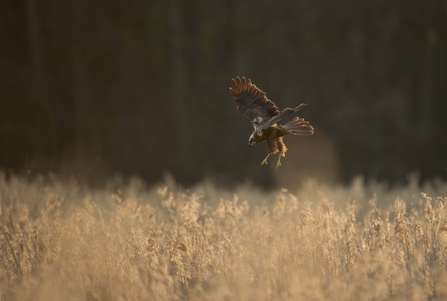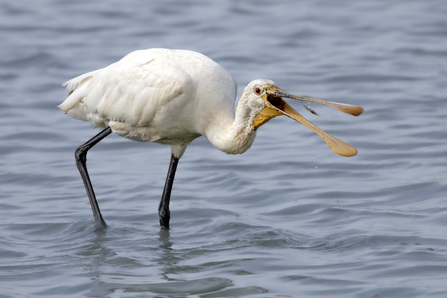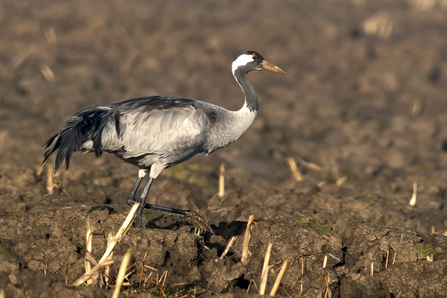I spend quite a lot of my free time in reedbeds. To the untrained eye, there doesn't seem to be much going on, but just beneath that vast blanket of swaying stems lies a world of secrecy, wonder and beauty. So, over the next few paragraphs, I will try to bring some of that beauty to you with five iconic reedbed birds. For this first section I'm going to tell you about my personal favourite - the bearded reedling.
Bearded Reedling:
Our small party of about ten were gathered on a boardwalk at Hickling. There wasn't much around, just a couple of oystercatchers zooming past and a chaser dragonfly patrolling back and forth on the hunt for insects. Suddenly a long-tailed bird sidled up a reed stem, calling with a distinctive ringing ping. We turned in awe of this stunning creature but after a few seconds it disappeared once more.
At first glance, bearded reedlings may look like another LBJ (‘little brown job’) but on closer inspection the adult male's plumage is, in fact, a bright russet-orange with white tail sides, a black undertail and pied wings. His head is an ashy shade of blue-grey adorned with a black plume of feathers extending from each sun-yellow eye, reminiscent of a pair of wispy beards, or even sideburns! Adult females are similar, but have a duller plumage overall and without the distinctive head pattern or dark undertail (replaced by - yes - brown.) Juveniles look very much like adult females, but have a black stripe on their back and you can tell young males apart by their black undertail.


